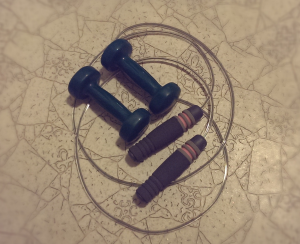I remember when in Australia we used to be amazed at how many Americans were overweight or obese. It seemed remarkable compared to what we considered ‘normal’. Well, things have changed. Now in Australia it is estimated that 37% of adults are overweight and an additional 24% are obese (Australian Bureau of Statistics, 2009). Many of us battle the bulge at some time, but according to Sandra Aamodt, about 80% of dieters don’t maintain their weight loss over the long-term. This is in part because we tend to have a desire to pick the easy option or choose a non-sustainable diet lifestyle. Fad diets promise the world, but if it was that easy, we would all be fit. Long-term weight loss intervention success is defined as 10% to 20% reduction in initial weight, maintained for at least one year [National Health and Medical Research Council (NHMRC), 2003].
The easy option
Proposed low-fat diet packages that promote home delivered ready-made healthy meals for their customers do not always aim for long-term weight loss. Instead of educating customers about food nutrition, what foods to buy, how to cook healthy foods, exercise and portion control, these ready-made meal packages are offering convenience to customers and promoting the idea of easy ways to lose weight just by consuming their products. However if the customer decides to one day stop purchasing these ready-made meal packages, they are still left not knowing about the strategies used to manage weight loss and weight management, such as food portion control, nutrition and calorie control.
I lost 10 kilograms
When I was in Hong Kong last year, not only was I reminded by family about my chubbiness, I also struggled with high cardio exercise (try walking up the stairs to the big Buddha on Lantau Island 天壇大佛, if you get the chance) and I would find myself sweating and panting whilst running around the MTR. This gave me the impetus to do something about my fitness and so I went on a fitness regime, starting January 2014.
No fad diets, no paying a personal trainer, no Lite n’ Easy, no Weight Watchers, no diet pills, no protein shakes, no Michelle Bridges and no gym membership! In 14 weeks, I lost over 10 kilograms.
How did I do it? No fad diets
1. Consult your GP – Given the number of injuries I accumulated during my younger years, I decided to consult with my GP to look at what exercises I could do without exacerbating old injuries.
2. Regular exercise – I started exercising three days a week, including walking and 10 minutes of jump rope each week. After my stamina increased I added more days of exercise. I don’t believe in gym memberships as I am just a regular girl wanting to keep fit. I simply exercised from home.
3. Keep your body moving – Believe or not, I did not take up rigorous fat burning exercises such as jogging, swimming or even crunches; I simply walked a lot, jump rope regularly and made sure I kept my body moving. Given my sedentary job, I would get incidental exercise whenever I could, such as using the stairs instead of catching the lift.
4. Know what you are eating – I studied food nutrition just by research online. If you rely on ready-made packages but are not familiar with information regarding nutrition, once you stop purchasing these ready packed meals, your weight is likely to come back.
5. Be patient and don’t give up – The first month was the most difficult. I saw a very minimal shift in weight. Despite increasing my exercise time, I found that my weight would increase, but I did not let this get to me. I wish I could provide before and after photos, but I genuinely believed back then that I wouldn’t be able to do it. It is important to note that modest weight loss will have an improvement on your health, but may not necessarily be reflected in body mass index (BMI) and appearance.
6. Work on long-term sustainable weight maintenance strategies – Most weight losses are not maintained and individuals regain weight after completing treatment (Puhl & Heuer, 2010). Make sure you adopt long-term sustainable weight maintenance strategies.
If you come up with your own plan and make slow adjustments, you are more likely to develop healthier habits with weight maintenance. If you are interested in losing weight, please consult your GP.
References
Australian Bureau of Statistics. (2009). National Health Survey: Summary of Results, 2007-2008 Reissue). Canberra: Australian Bureau of Statistics.
NHMRC. (2003). Clinical Practice Guidelines for the Management of Overweight in Obesity in Adults. Canberra: National Health and Medical Research Council.
Puhl, R. M., & Heuer, C. A. (2010). Obesity stigma: Important considerations for public health. American Journal of Public Health, 100, 1019-1028.
Gina Huisy, MAPS (2014).


You must be logged in to post a comment.